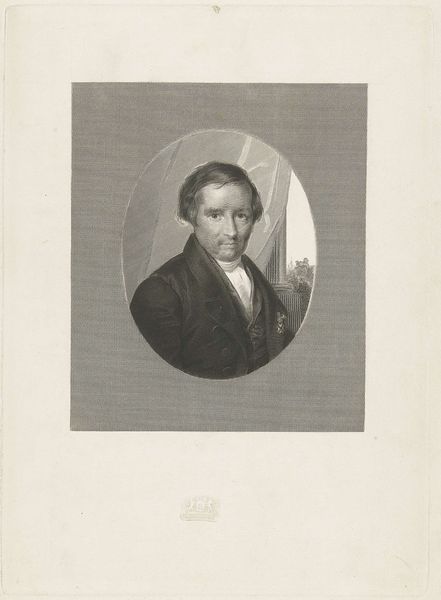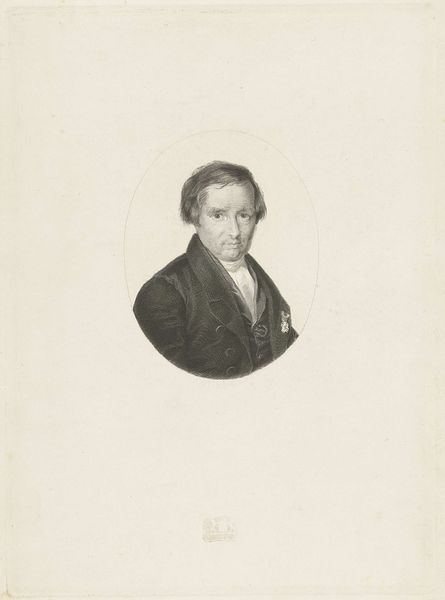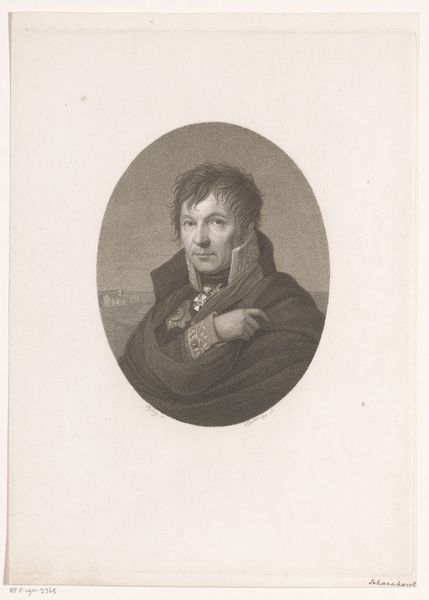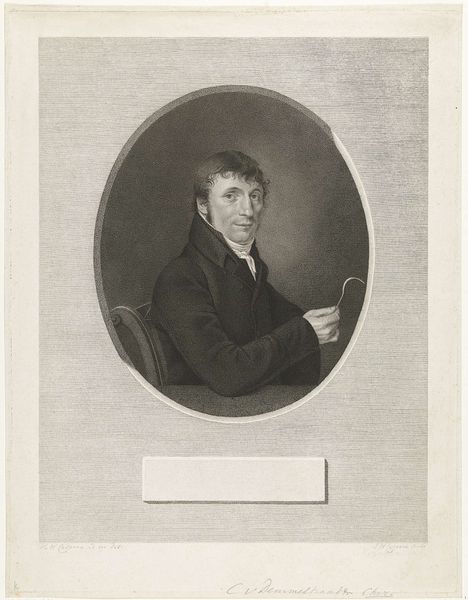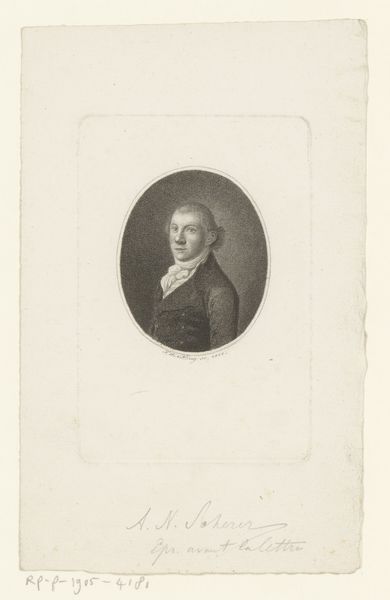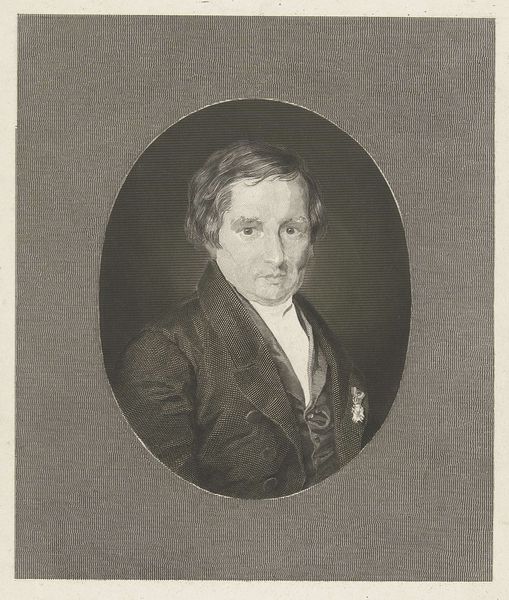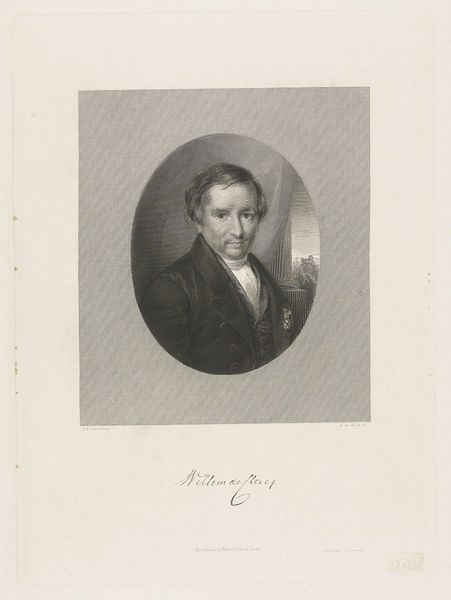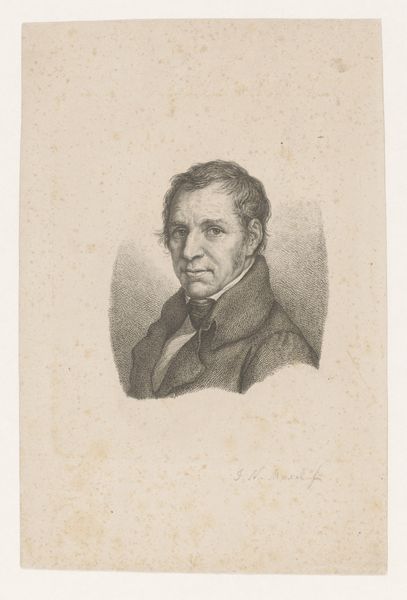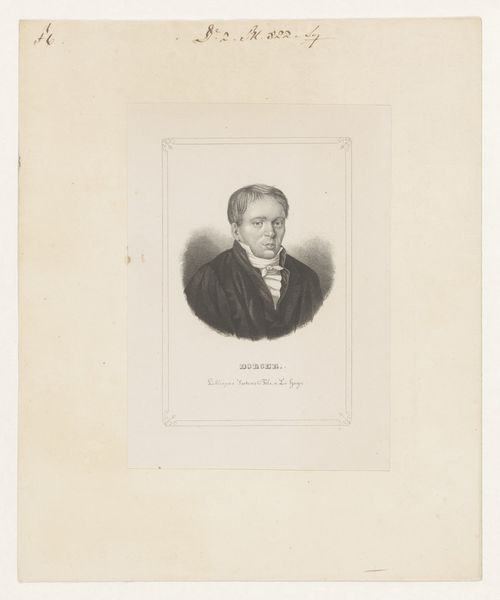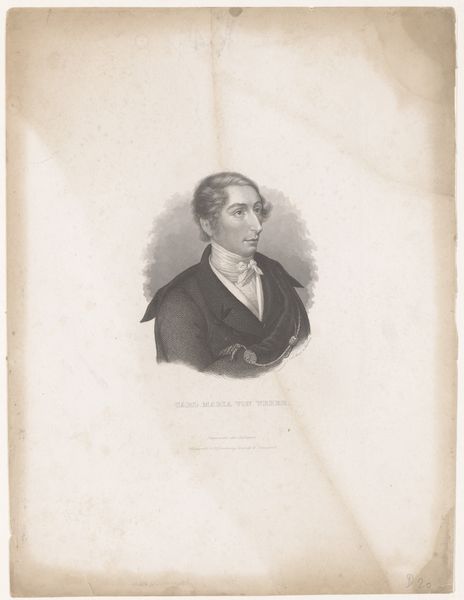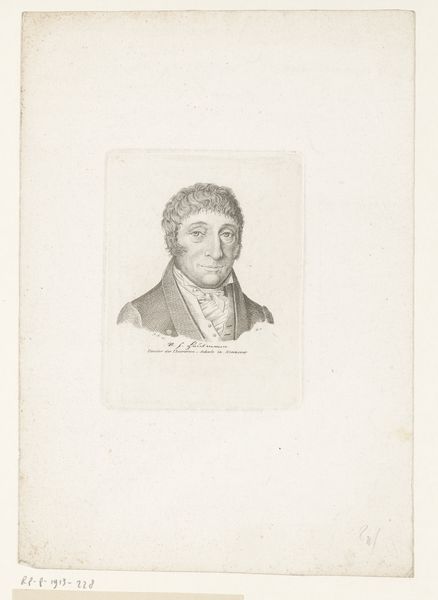
print, engraving
#
portrait
# print
#
history-painting
#
engraving
#
realism
Dimensions: height 300 mm, width 220 mm
Copyright: Rijks Museum: Open Domain
Curator: This is a print titled "Portret van Willem de Clercq," created between 1829 and 1845. Henricus Wilhelmus Couwenberg is credited with the engraving. It's currently held at the Rijksmuseum. Editor: It's remarkably still. Something about the oval framing adds to the feeling that we’re seeing a moment suspended, an impression strengthened by the tight grayscale palette. Curator: That stillness comes, in part, from the engraving process. Consider the labor involved in creating the intricate lines that define the subject's face and clothing. It reflects a period deeply concerned with realistic depiction but limited by reproductive technology. Editor: I can appreciate that historical process. Technically speaking, look at how he captures the texture of fabric— the lapel and the crispness of his shirt are wonderfully rendered with such a narrow tonal range. It also subtly emphasizes the man himself as the clear focal point of the portrait. Curator: Precisely. Couwenberg would have had to be quite strategic. Engravings like this served a purpose, to disseminate images and preserve likeness at a time before photography became commonplace. Think about the engraver's role as a reproducer, as an artisan responding to and working within social requirements and emerging class aspirations. Editor: Interesting point about the relationship with new markets, which are indeed very plausible for realism overall, and regarding De Clercq in particular, notice he's wearing an honorific medallion—probably an emblem of status from his commercial life as a businessman and writer. I wonder what the semiotics were around wearing things like that back then. Curator: It represents recognition of the man's contribution. The act of memorialization is tied up to this material reality. These kinds of portraits are acts of documentation but are always mediated by the class consciousness of both the sitter and the producer. Editor: That’s well noted. The simple, formal qualities serve to underscore your interpretation about De Clercq's social and professional standing; he’s the archetypal bourgeoisie being presented here as someone stern, upright, and respectable. Curator: Right, and recognizing how the image production played a pivotal role in conveying very specific ideologies—about value, labor, and class. Editor: Food for thought... In short, it shows just how art, in any form, never quite exists outside the currents and conditions of history.
Comments
No comments
Be the first to comment and join the conversation on the ultimate creative platform.
